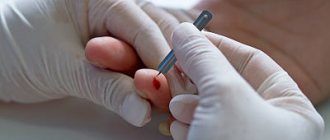Interesting Facts
| Options | Indications |
| Time from conception | 31 weeks |
| Period by month | 33 weeks |
| What month | 8 |
| Dimensions and weight of the fetus | 440 mm, 1900 g |
| Uterus dimensions | VDM - 31-33 cm |
| Pregnant weight | Gain from the beginning of pregnancy is 10-12 kg; over the last week 400-500 g |
Your baby is the size of
Mexican turnip
440 mm Size
1900 g Weight
You are probably finding it increasingly difficult to feel comfortable right now. You may get tired quickly, suffer from insomnia, and experience frequent pain in your legs and lower back. Be patient! There is very little time left to wait. Very soon you will have a beautiful baby, and unpleasant symptoms will be a thing of the past. Now you can help yourself by tuning into positive emotions and listening to the sensations in your body. Let's find out what happens to the mother and fetus during this period, but let's start with the “arithmetic”.
Feelings of the expectant mother
Frequent companions of a pregnant woman at 33 weeks are heartburn, nausea and shortness of breath. These symptoms are caused by hormonal changes in the body. To maintain pregnancy, progesterone relaxes smooth muscles throughout the body, including the sphincters of the digestive tract. Therefore, gastric juice is released onto the esophageal mucosa and irritates it.
After physical activity, and sometimes suddenly, you may feel a tugging in your stomach and lower back, as if everything is turning to stone. The condition does not last long and goes away on its own when you change position. These are training fights. It is believed that this is how the body prepares for the upcoming labor.
If at 33 weeks you sometimes feel rhythmic twitching in your stomach, then most likely the baby is hiccupping at this moment. This releases excess amniotic fluid, which the baby swallows. This is not dangerous. You can help him cope with hiccups faster if you breathe deeply and measuredly and change your body position.
Changes in the body of the expectant mother
At 33 weeks of pregnancy, a pregnant woman is unlikely to describe her state of health as excellent. An enlarged belly places a high load on the bones and muscles of the back and legs. The uterus constrains the organs that are located below, on the side and above, which affects their activity. And the psychological state in the third trimester cannot be called stable. Worries about the upcoming birth and the health of the baby are largely due to the increased amount of hormones in the blood of the expectant mother.
Belly at 33 weeks pregnant
Where does it seem to grow? But the tummy continues to increase in size, because the baby is still gaining weight. For now, the stomach is noticeably propping up the ribs, which can bring discomfort to the pregnant woman, but very soon it will drop. This is due to the fact that the baby takes a head down position, and after some time the uterus with the amniotic sac drops slightly. So soon the ribs will experience less pressure, and breathing will be much easier.
Pulling in the lower abdomen at 33 weeks of pregnancy
If from time to time your stomach “turns to stone” or your lower abdomen pulls, do not forget that this could be training contractions, through which the uterus prepares for childbirth. They should not be painful, and you also need to monitor their frequency. If the time between these contractions gradually decreases, watery discharge appears, or all this is accompanied by pain, we can assume the onset of labor. In this case, do not panic, take the things you have prepared (have you already packed the necessary things for the maternity hospital?) and call an ambulance.
Discharge at 33 weeks of pregnancy
Towards the end of pregnancy, it is especially important to monitor the nature of the discharge, since any change in it may indicate some processes in the woman’s body. In some cases it is necessary to take immediate action.
Thus, discharge that is odorless and does not differ in any color is considered normal. At the same time, they should be homogeneous in consistency. What should a pregnant woman be wary of?
- White, curd-like discharge accompanied by itching. This is how candidiasis (thrush) can manifest itself, which must be treated before the baby is born.
- Green discharge with an unpleasant odor. They indicate the presence of an inflammatory process in the body. It also needs to be identified and treated so that the disease does not affect the health of the child and the pregnant woman herself.
- Blood in the discharge. Sometimes blood appears on the pad if there are cracks in the intestinal mucosa or hemorrhoids. But if bloody discharge appears directly from the vagina, then you should call an ambulance, because blood can be released during placental abruption. When it is presented, this is even more likely to happen.
- Watery discharge. If there are not very many of them, we can talk about water leakage. In the case when their number is large enough, it is worth assuming the onset of labor. And if in the first case a woman needs to go to an antenatal clinic, where she can be given a referral to a hospital, then in the second case there is no need to hesitate - when the water breaks, you need to immediately go to the maternity hospital.
- Mucus discharge . If their amount can be measured with one tablespoon, then it may be a mucus plug. Its departure also indicates the onset of labor.
Movements at 33 weeks of pregnancy
Despite the fact that the baby becomes cramped, he continues to actively move and move in the mother’s womb. Any movement of his is now noticeable from the outside. A pregnant woman should still monitor the activity of her baby so that its changes do not go unnoticed. When the baby stops moving or his movements become too active, it is necessary to undergo a series of examinations to identify the problem.
Childbirth at 33 weeks of pregnancy
The birth of a baby before 37 weeks inclusive is considered premature. This is due to the fact that not all systems of his body are fully formed. And yet, the birth of a child at this stage is no longer considered critical. Yes, his body weight suggests that he is premature, and his body could still develop for some time in the mother's womb. However, it is safe to say that such babies are more likely to survive if they are under medical supervision for some time.
Caesarean section at 33 weeks of pregnancy
A caesarean section at this stage is usually performed urgently. Most often, the indication for this operation is developing gestosis. This condition is dangerous for the life of mother and baby, but for some reason many pregnant women believe that their task is to carry the child to 40 weeks, no matter what. But doctors say that delivering a premature baby is easier than saving the lives of both, especially when gestosis has developed to the last degree of severity. Therefore, if you have doubts about whether to agree to a caesarean section according to indications or not, it is better to give your consent. Your life and the life of your child depend on the decision you make.
Fetal development
The average weight of a child at 33 weeks of pregnancy is 1.9 kg, and his height is about 44 cm, so it becomes more crowded in the uterus. But, despite this, you continue to feel the movements of the fetus, by which you can judge its well-being. Be sure to tell your gynecologist if you count less than 10 episodes of physical activity in 12 hours.
If the baby doesn’t move much, the doctor will listen to his heartbeat and, if necessary, prescribe an ultrasound to rule out developmental pathologies. Sharp and rough tremors are also an unfavorable symptom: they are often observed against the background of oxygen starvation of the fetus.
Why do an ultrasound at 33 weeks
It's the 9th month of pregnancy. The baby's weight is about two kilograms. The formation of the respiratory organs, nervous and other systems of the body is completed. The baby hears sounds from outside and recognizes the voices of his family. His pupils react to light. He even dreams.
During an ultrasound examination at the 33rd week of gestation, the doctor pays attention to:
- on the location of the fetus. During this period, it should be positioned head down;
- on the umbilical cord, whether it is wrapped around the baby. Umbilical cord entanglement is possible when the baby turns over into the correct position. But this is extremely undesirable, as it can lead to suffocation;
- whether the size of the fetus corresponds to the norm. A fetus that is too large will have difficulty passing through the birth canal. A small fetus indicates a developmental delay if this is not related to the genetic characteristics of the parents;
- Is the heart rate normal? Based on the heart rhythm, the doctor will determine whether there are any pathologies in the cardiovascular system, whether the baby is suffering from oxygen starvation;
- on the state of amniotic fluid, its quantity and quality;
- on the degree of maturation and thickness of the placenta.
Based on the results of the ultrasound, the doctor will determine the date of birth with maximum accuracy.
Tests and ultrasound
The thirty-third week of pregnancy is the optimal time for the third ultrasound. His goals:
- assess whether fetal development indicators are normal;
- determine the maturity of the placenta;
- measure the volume of amniotic fluid.
The results of the study are important for determining the method of delivery, since cesarean section is often recommended for breech presentation.
During your third trimester, you will be asked to have a cardiotocography, or CTG, done at each gynecology visit. You rest reclining on a couch for 30 minutes while special sensors on your abdomen measure the fetal heartbeat. Also, by pressing a button, the woman records every episode of movement.
CTG interpretation during pregnancy of 33 weeks is carried out by a gynecologist on the same day, most often immediately in the presence of the pregnant woman. One of the main indicators is BHR - basal heart rate. Normally, it should be between 120 and 160 beats per minute.
Why and how is abdominal circumference measured?
The size of the expectant mother's belly can tell the gynecologist managing the pregnancy a lot. It begins to be measured starting from week 20 at each visit to the doctor and compared with table values. This makes it possible to track the pace of fetal development and notice deviations in time.
In order for the gynecologist to correctly measure the circumference of the tummy, it is necessary to empty the bladder before the appointment.
The woman is placed on a flat, hard surface and the circumference of her abdomen is measured with a centimeter tape. The abdominal muscles should be relaxed.
In addition, the gynecologist measures the height of the uterine fundus and draws conclusions by comparing both of these values.
Possible complications
At 33 weeks of pregnancy, you may more often feel pain in the bones in the pelvis and pubic area. This happens because under the influence of the hormone relaxin, ligaments and bone tissue become softer and more elastic. There is no reason to worry: this is how the pelvis is gradually preparing for the upcoming birth. But if the pain is unbearable, then we can already talk about inflammation of the pubic bone. In this case, a caesarean section is prescribed.
Other difficulties of pregnancy at 33 weeks are:
| Name | Symptoms | Treatment |
| Placental insufficiency | For a woman it goes unnoticed, but the baby experiences hypoxia. | Complex drug therapy in a hospital setting. |
| Placental ostium | Severe pain in the lower abdomen, heavy vaginal bleeding, increased blood pressure. | Depending on the degree of pathology, drug treatment or emergency caesarean section may be prescribed. |
| Preeclampsia | Severe swelling of the limbs and face, high blood pressure. | To reduce blood pressure and improve blood microcirculation, anticonvulsants, intravenous crystalloid solutions, etc. are prescribed. |
Preparation and performance of ultrasound
It is advisable to perform an ultrasound scan at the 33rd week of pregnancy before lunch. But you don’t need to starve for this. A light breakfast with a sweet drink will make the baby active, and the examination will provide more information. The study is carried out using transvaginal and transabdominal methods.
Before going to the procedure, you need to have breakfast
When going for a routine ultrasound, you must have a referral from your obstetrician-gynecologist, a sheet for the couch, a napkin for removing the gel and a pair of condoms for a vaginal ultrasound. Condoms will be required for transvaginal examination of the cervix.
If the cervix is slightly open, the woman will need to be admitted to the hospital for conservation or to prepare for premature birth.
How to prevent stretch marks from appearing
It is difficult to predict their appearance: neither heredity nor the absence of stretch marks in previous pregnancies guarantees that this time too you will manage without them. It is extremely difficult to get rid of stretch marks that have already appeared. Therefore, the best option is prevention. It includes:
- daily systematic body skin care using moisturizers or special creams against stretch marks;
- proper nutrition high in vitamins and minerals, polyunsaturated acids, fiber;
- weight control - do not allow sudden gain;
- wearing a bandage and support underwear;
- light massage of problem areas.
A contrast shower promotes blood circulation and makes tissue more elastic. Exercising during pregnancy will not only help keep your body in good shape, but will also improve the condition of your skin.
Checklist for 33 weeks of pregnancy
- Find out at your chosen maternity hospital what you can and cannot take with you. Already now you can collect 3 bags: for the maternity and postpartum ward, as well as things for discharge.
- If you are worried about swelling in your legs, wear anti-varicose jersey and comfortable shoes. This will prevent stagnation of venous blood and improve placental blood flow.
- Be with friends more often, go to interesting places or just visit. The first months after the birth of a baby are often associated with the forced social isolation of the mother. So enjoy the company while you can.
You can apply for an exchange card, sick leave certificates and various certificates by contacting the Women's Medical Center. Forget about long waits at the door of a specialist. We pay close attention to each of our patients and do everything possible to make her stay at the Center as comfortable as possible.
How to deal with leg swelling at 33 weeks
Swelling during pregnancy at this stage is a widespread phenomenon. Expectant mothers complain of swelling of the legs (especially in the ankles), which worsens after physical activity or a walk. Swelling of the legs in pregnant women is associated with a violation of the speed of blood flow: after all, the growing uterus puts pressure not only on the internal organs, but also on the blood vessels. And the blood, being under pressure, retains water in the legs.
To prevent edema during rest, it is necessary to place your feet above your head, for example, on a pillow or a rolled-up blanket, wear comfortable shoes for pregnant women and perform special exercises. It is not recommended for a pregnant woman to stand, sit, or stay in stuffy rooms for a long time. A pregnant woman's diet should be balanced and healthy. To prevent swelling, it is necessary to limit or completely eliminate the consumption of salt, salty foods and spicy foods. Salt tends to retain fluid in the body, and generously spiced dishes can cause not only an attack of heartburn, but also severe thirst.
Weight gain at 33 weeks of pregnancy ranges from 6.8 kg (with a BMI of more than 26) to 11.9 kg (with a BMI of less than 19.8). To calculate your individual weight gain at 33 weeks, use the pregnancy weight gain calculator.









